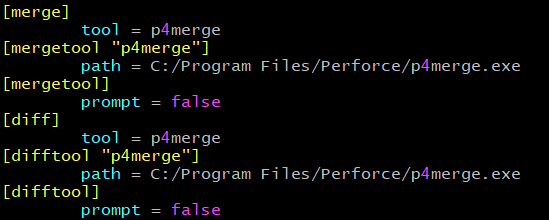


If you have a commit-message policy in place, then putting a template for that policy on your system and configuring Git to use it by default can help increase the chance of that policy being followed regularly. # with '#' will be ignored, and an empty message aborts the commit. # Please enter the commit message for your changes. Then, your editor will open to something like this for your placeholder commit message when you commit: subject line To tell Git to use it as the default message that appears in your editor when you run git commit, set the commit.template configuration value: $ git config -global commit.template $HOME/.gitmessage.txt For instance, suppose you create a template file at $HOME/.gitmessage.txt that looks like this: subject line If you set this to the path of a file on your system, Git will use that file as the default message when you commit. Now, no matter what is set as your default shell editor variable, Git will fire up Emacs to edit messages. To change that default to something else, you can use the core.editor setting: $ git config -global core.editor emacs core.editorīy default, Git uses whatever you’ve set as your default text editor or else falls back to the Vi editor to create and edit your commit and tag messages.
#P4merge as mergetool git manual#
The manual page for git config lists all the available options in quite a bit of detail. If you want to see a list of all the options your version of Git recognizes, you can run $ git config -help Many options are useful only in edge cases that I won’t go over here. Although tons of options are available, I’ll only cover the few that either are commonly used or can significantly affect your workflow. The majority of the options are client side-configuring your personal working preferences. The configuration options recognized by Git fall into two categories: client side and server side.

You can also set these values by manually editing the file and inserting the correct syntax, but it’s generally easier to run the git config command. git/config trump those in /etc/gitconfig, for instance. Each level overwrites values in the previous level, so values in. These values are specific to that single repository. git/config) of whatever repository you’re currently using. You can make Git read and write to this file by passing the -global option.įinally, Git looks for configuration values in the config file in the Git directory (. The next place Git looks is the ~/.gitconfig file, which is specific to each user. If you pass the option -system to git config, it reads and writes from this file specifically. The first place Git looks for these values is in an /etc/gitconfig file, which contains values for every user on the system and all of their repositories.
#P4merge as mergetool git series#
Git uses a series of configuration files to determine non-default behavior that you may want. You saw some simple Git configuration details in the first chapter, but I’ll go over them again quickly here. Now you’ll learn a few of the more interesting options that you can set in this manner to customize your Git usage. One of the first things you did was set up your name and e-mail address: $ git config -global user.name "John Doe" As you briefly saw in the Chapter 1, you can specify Git configuration settings with the git config command.


 0 kommentar(er)
0 kommentar(er)
